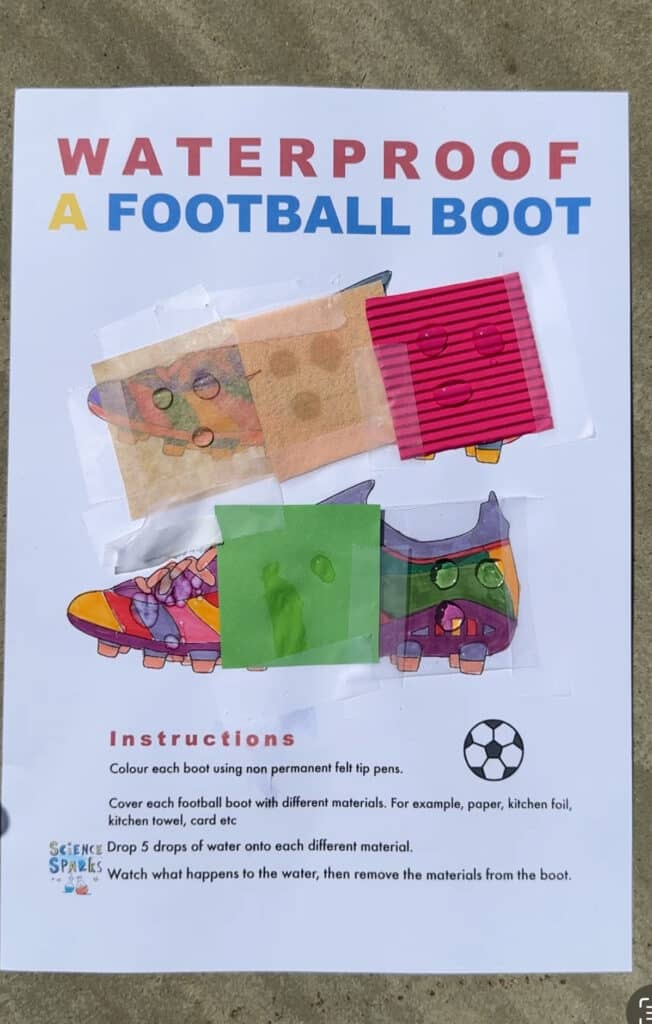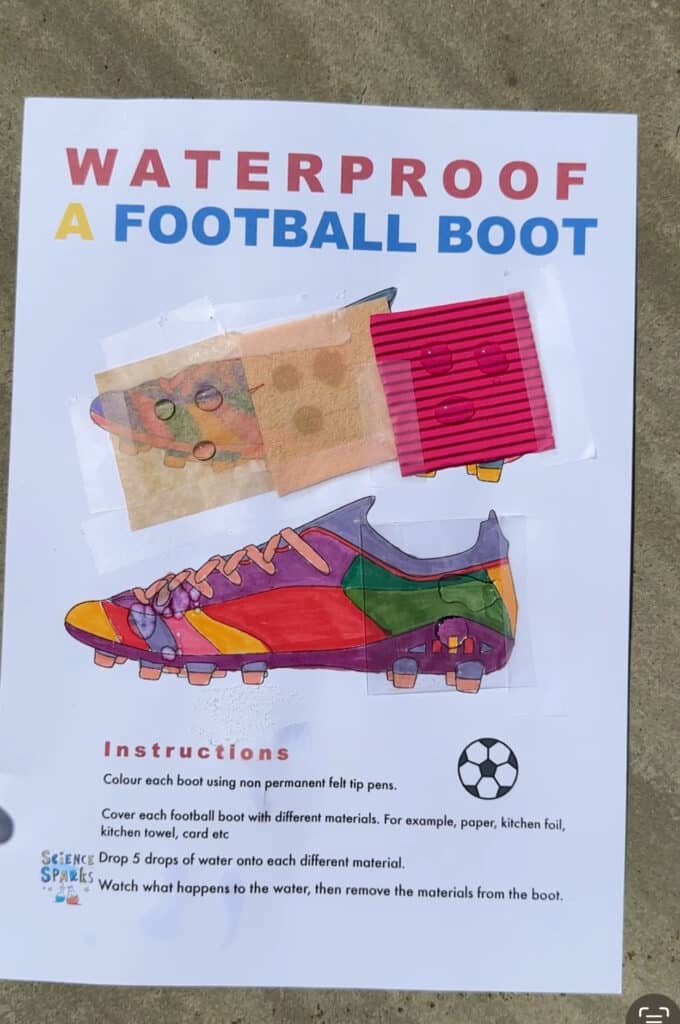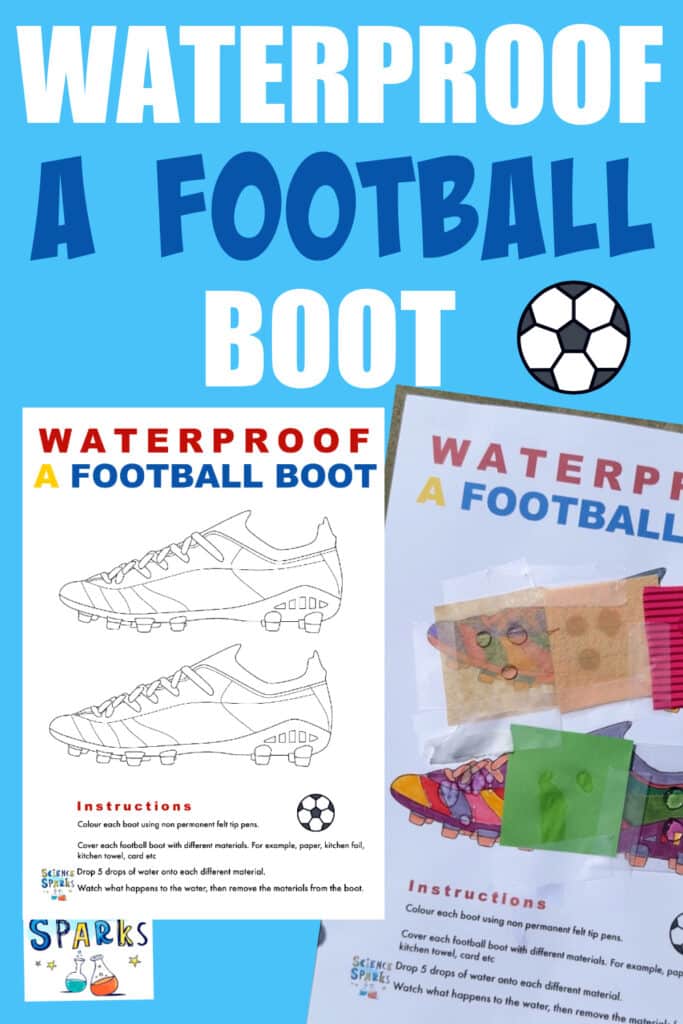This easy football-themed science activity is similar to my waterproof a boot investigation. The idea is to test various materials to determine which are waterproof and which are not. It’s a lovely visual way to learn how different materials have different properties.
I wrote this activity to coincide with Euro 2024, but it also ties in with the Olympics, Football World Cup or any other time of year.

Waterproof a football boot
To make the investigation as reliable as possible, there are a few things to think about. The same amount of water should be used for each material, and the same type of pen used underneath. It would be an unfair test if one material was completely saturated with water and one just had a few drops sprinkled over the surface.
You’ll need
Materials to test – kitchen foil, paper, cloth, felt, wax crayon etc
Football image/drawing or use my handy printable experiment sheet
Water
Tape
Water sprayer/dropper
Non-permanent felt tip pens



Instructions
Colour the football boot with felt tip pens.
Cut out small squares of the materials to test. These should be roughly the same size.
Spend some time feeling and looking at the different materials. Think about which will be the most waterproof. It might help to consider what each is normally used for.
Carefully tape the squares over the football boot until it is completely covered.
Spray the boot evenly with water.
Look at the surface of each material. Do they look different? If the material is waterproof, the water will be visible in beads on the surface.
Carefully peel off the squares of different materials to check if the colours are wet.




How can you tell if a material is waterproof?
Water will usually form beads on top of a waterproof material and be absorbed by a non-waterproof material.
The colouring under the waterproof materials should stay dry.
More about materials
Different materials have different properties, which make them useful for different functions. For example, glass is used in windows because it is transparent, waterproof coats often have a wax or plastic coating to keep water out, and cutlery is usually made from stainless steel as it doesn’t rust and is strong.
More activities for learning about the properties of materials
Learn about stretchy materials with a stretchy materials challenge.
Find the best materials to make a superhero cape.
Investigate insulating materials with a save the ice pop challenge.

Last Updated on June 17, 2024 by Emma Vanstone

Leave a Reply